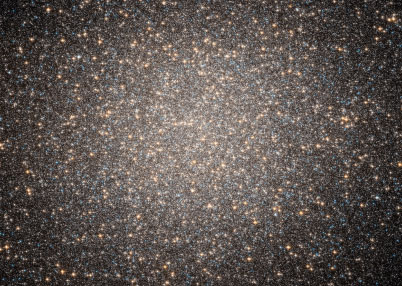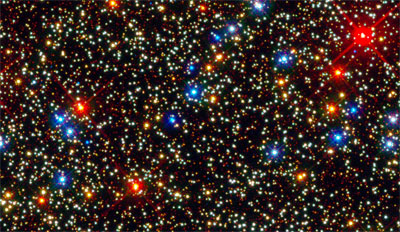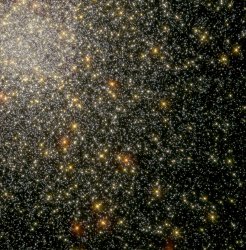
Certain of the oldest galaxies in the cosmos contain three times more ordinary matter – and so many more stars – than current astrophysical evolutionary models predict. This conclusion comes from the international team Atlas3D led by a scientist from Oxford University (UK) and which includes five scientists from the Observatoire de Paris, from the CEA, from the CNRS and from Lyon University. The results emerge from the unparalleled observation of a sample of 260 evolved elliptical and lenticular galaxies, which are less than 135 million light years from us and whose masses exceed 6 billion solar masses. The measurements, which combined imagery with two dimensional spectroscopy (field integration) were carried out at the 4.2 m William Herschel telescope at La Palma, in the Canary archipelago. The scientists obtained novel data on the stellar populations which make up these island universes and on their motions. The analysis and the simulations concerned the kinematics and the dynamics.
Result : the models which for over 50 years have assumed that the light from a galaxy is related to its mass will now have to be revised. Furthermore, a new mystery emerges and will have to be studied in detail : how was it possible for the galaxies which were born in the early moments of the Universe to evolve and gain weight so rapidly ?
The light radiated by galaxies is the tree which hides the forest. It comes from the most massive and the brightest stars, i.e. the giants and the supergiants. A contribution is thereby masked. Galaxies could contain an enormous number of very small stars, representing a considerable material contribution which nevertheless remains invisible because it does not radiate much.
Until now, it has been assumed that the light emitted by a galaxy could be used to estimate the total mass of all its stellar populations. This work suggests that, on the contrary, galaxies are all different from each other. Some contain many more stars than others and look very odd.
Thus, in addition to their brightness, the second parameter needed to classify galaxies is their mass. That is what the models predict. However, until now, it has turned out to be difficult to calculate the stellar contribution since the contribution of the famous dark matter which fills the galactic haloes is not known with any precision ; moreover, we know neither its nature nor its origin. Different attempts to do this have all failed until now.
The new analysis, which relies on a mapping of the stellar dynamics of many galaxies, combined with numerical models, has enabled for the first time the mass contribution of stars to be separated from that of dark matter : it has thus emerged that the relation between luminosity and mass is far from being a universal law. It varies from galaxy to galaxy. Certain old elliptical or lenticular galaxies turn out to be three times more massive than had been believed.
How to deduce the mass of a galaxy from the light it radiates is an old and controversial question. Its solution involves the determination of the « initial mass function », a kind of original pedigree of each galaxy, with which it is possible to free oneself from the poorly known properties of dark matter.
This work emphasizes that much remains to be learnt about the evolution of galaxies and the early Universe. A part of the history of galaxies is written in their various stellar populations. Stellar formation was different in the past. It seems to have favoured the emergence of dwarf stars better able to spawn … habitable planets.
To know more
http://www-astro.physics.ox.ac.uk/atlas3d/
Collaboration
The scientists behind this study are at : Oxford University (UK), the Gemini Observatory, the University of California at Berkeley, l’Observatoire de Paris, the CEA Paris-Saclay, the University of Massachusetts, the European Southern Observatory ESO, Leiden University (Netherlands), Lyon Observatory, the Max-Planck Institut fur extraterrestrische Physik and the Max-Planck Institut fur Astrophysik (Germany), the Dutch Institute of radio astronomy and Groningen University, Hertfordshire University, the Swinbourne technical University, Toronto University, and the Institute of technology in New Mexico.
Reference
A systematic variation of the stellar initial mass function in early-type galaxies, published in the April 26th 2012 issue of the journal Nature.
Images



